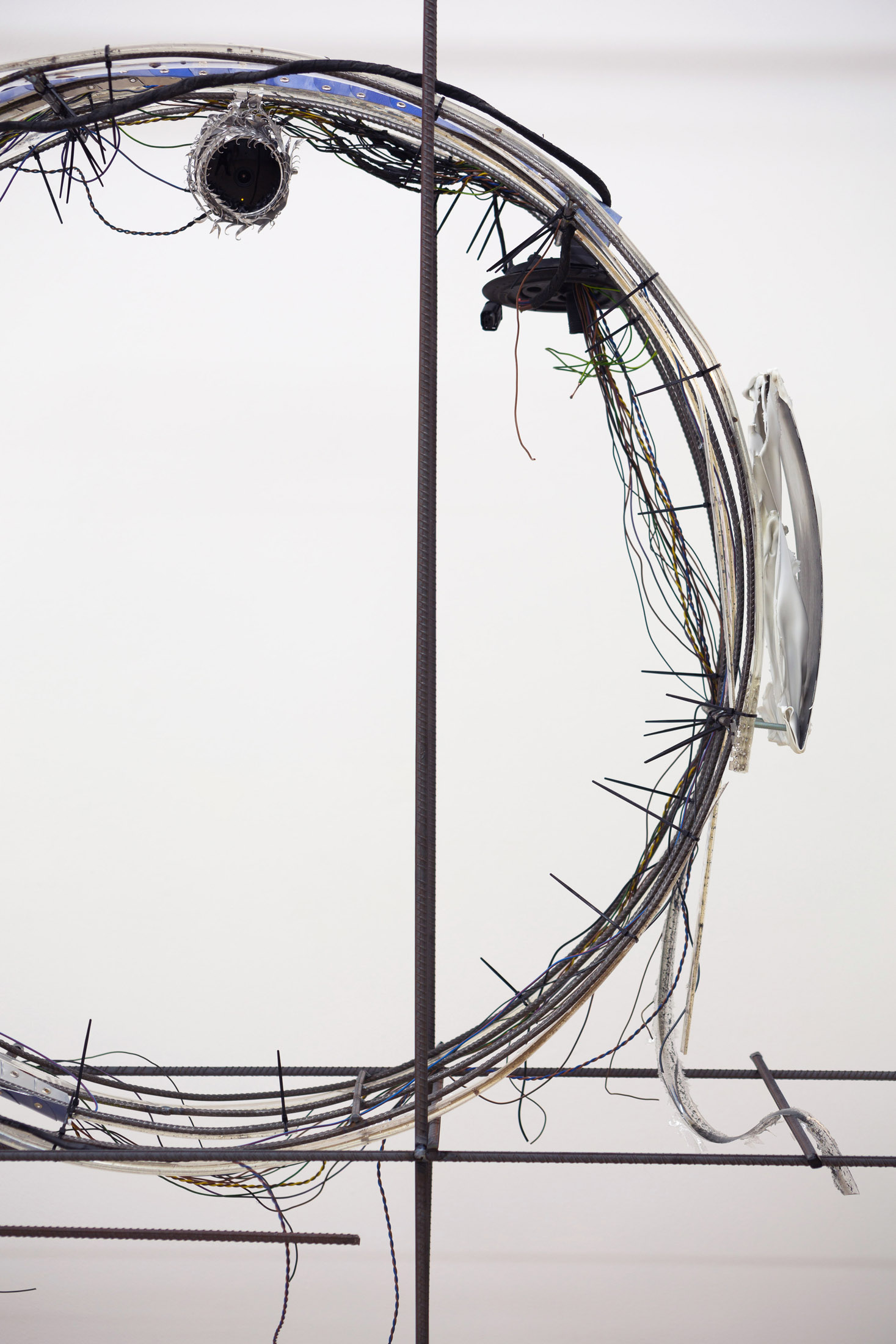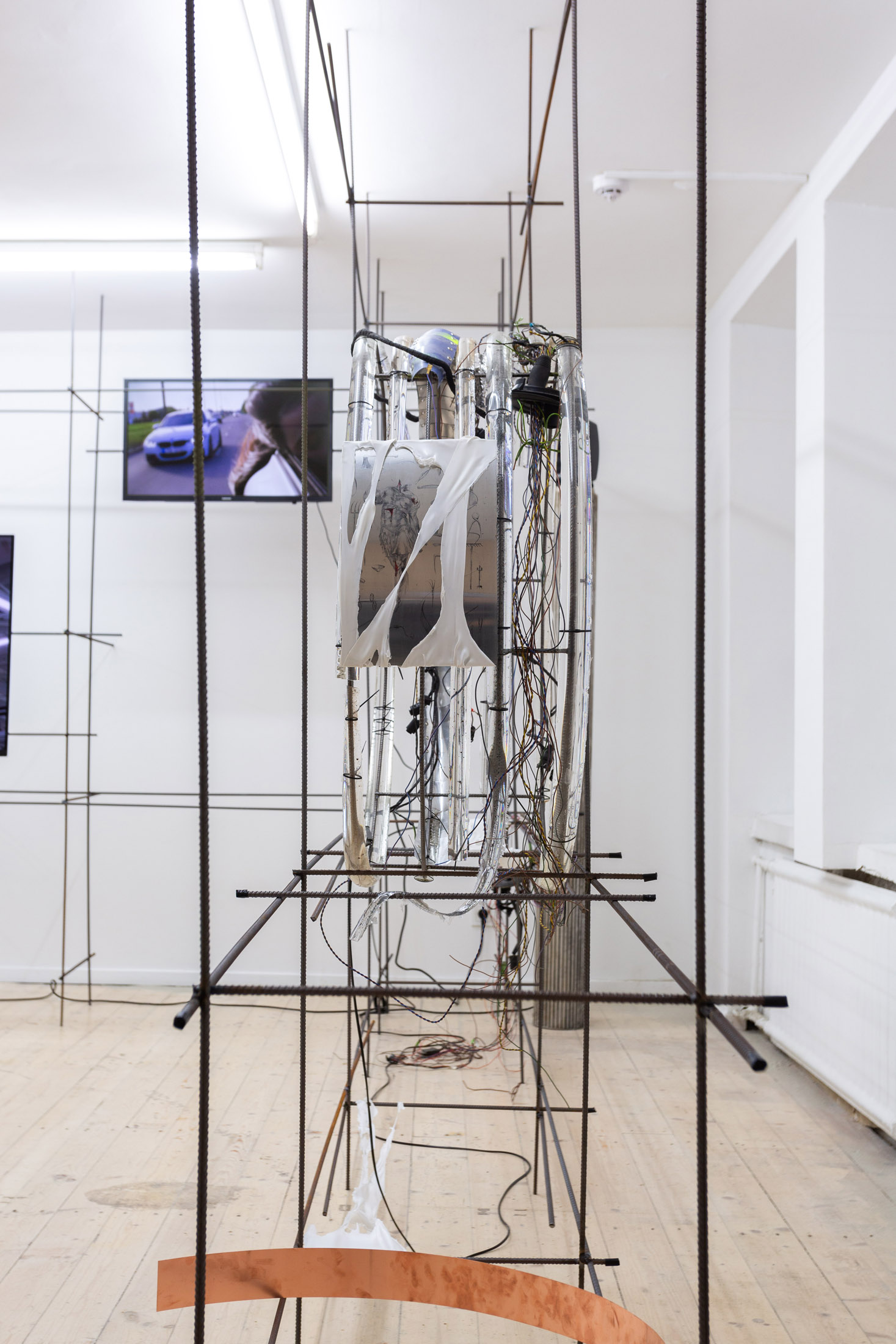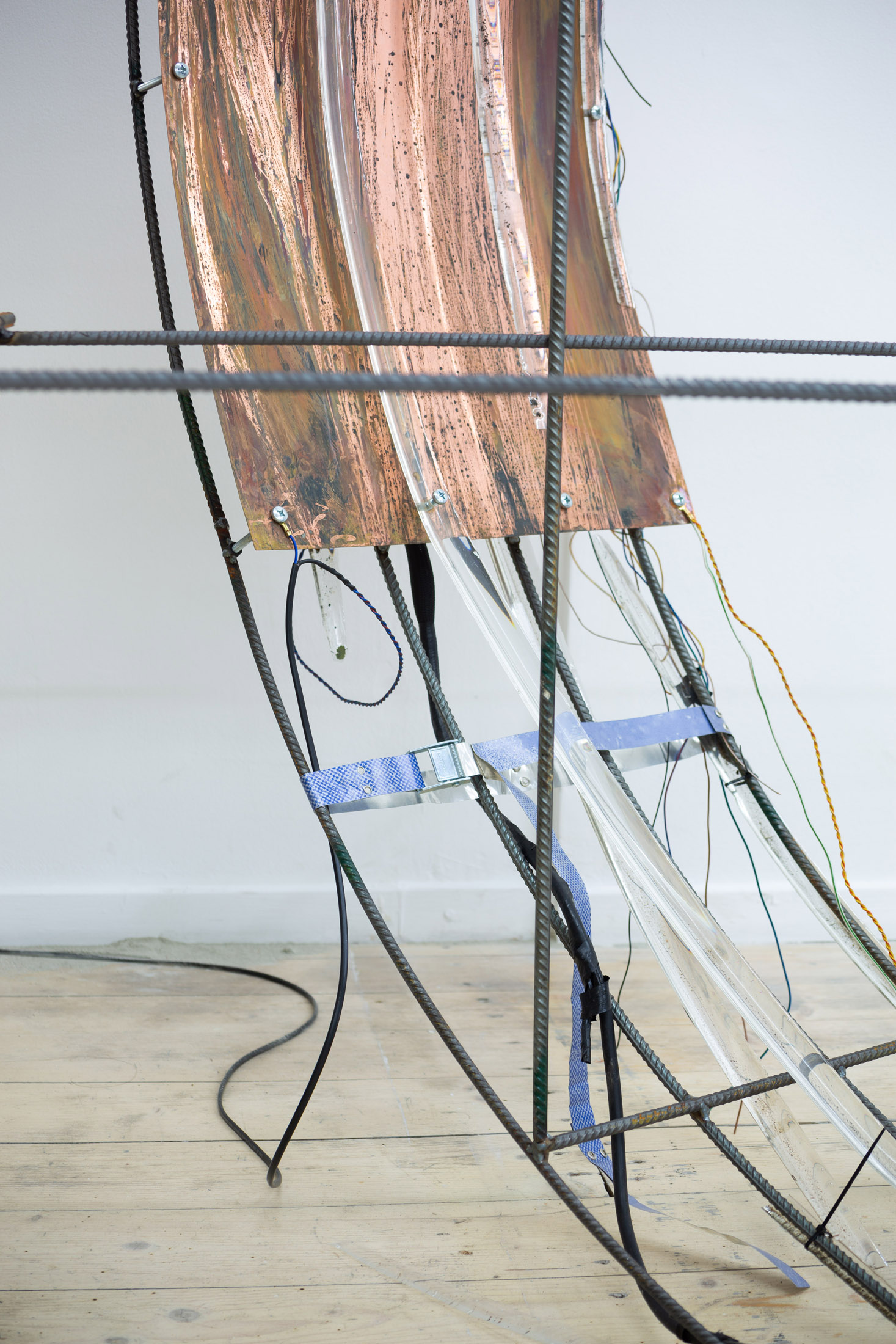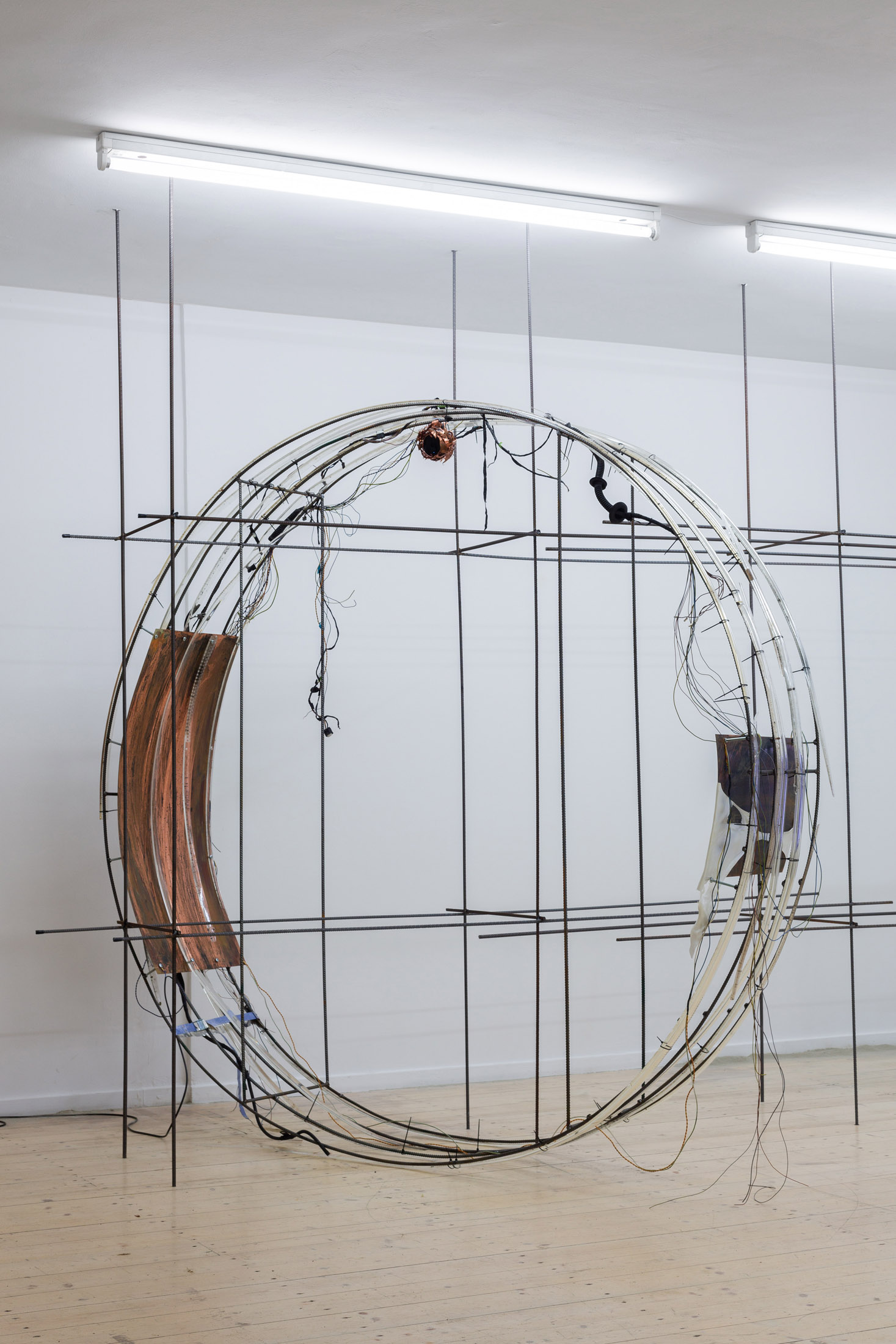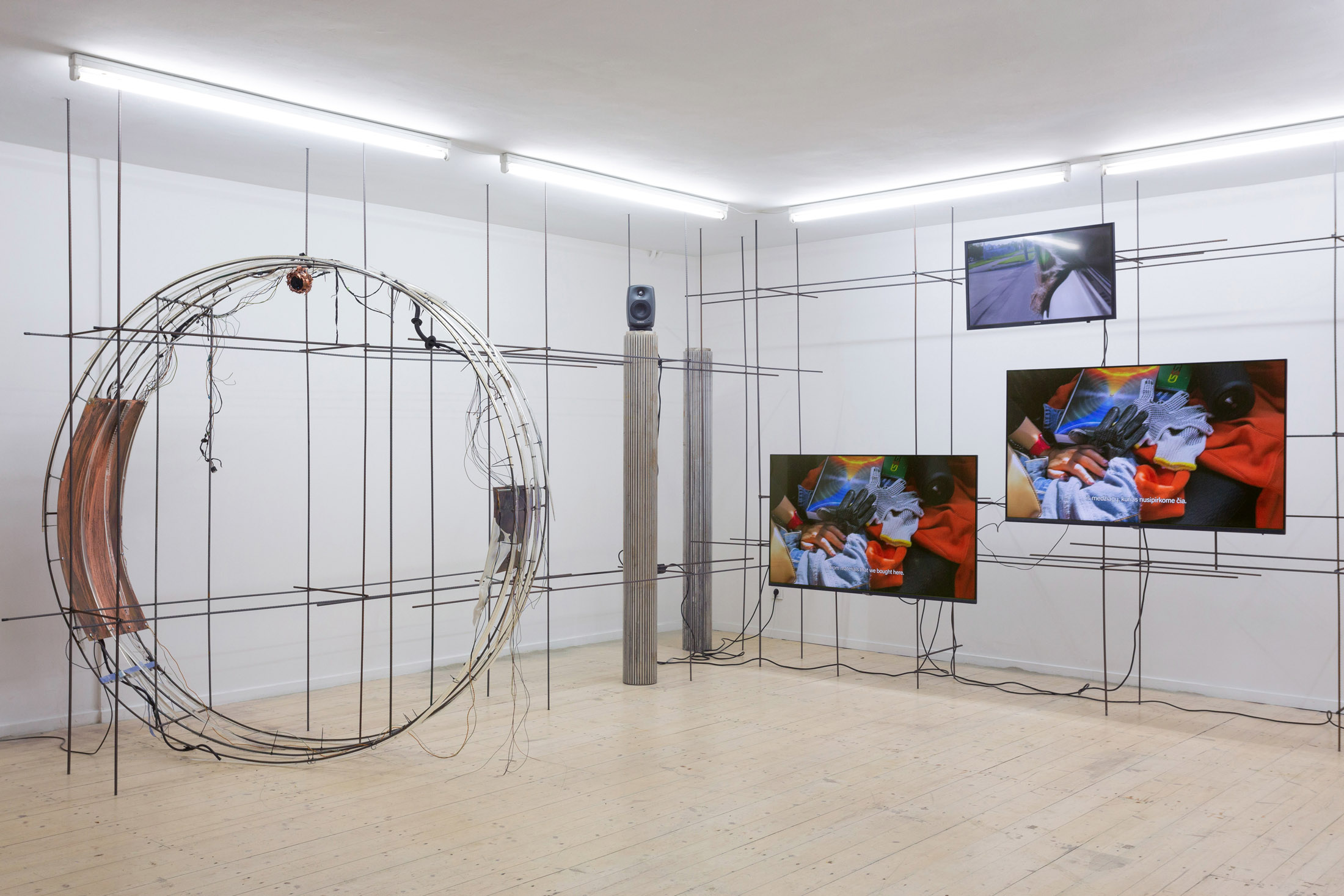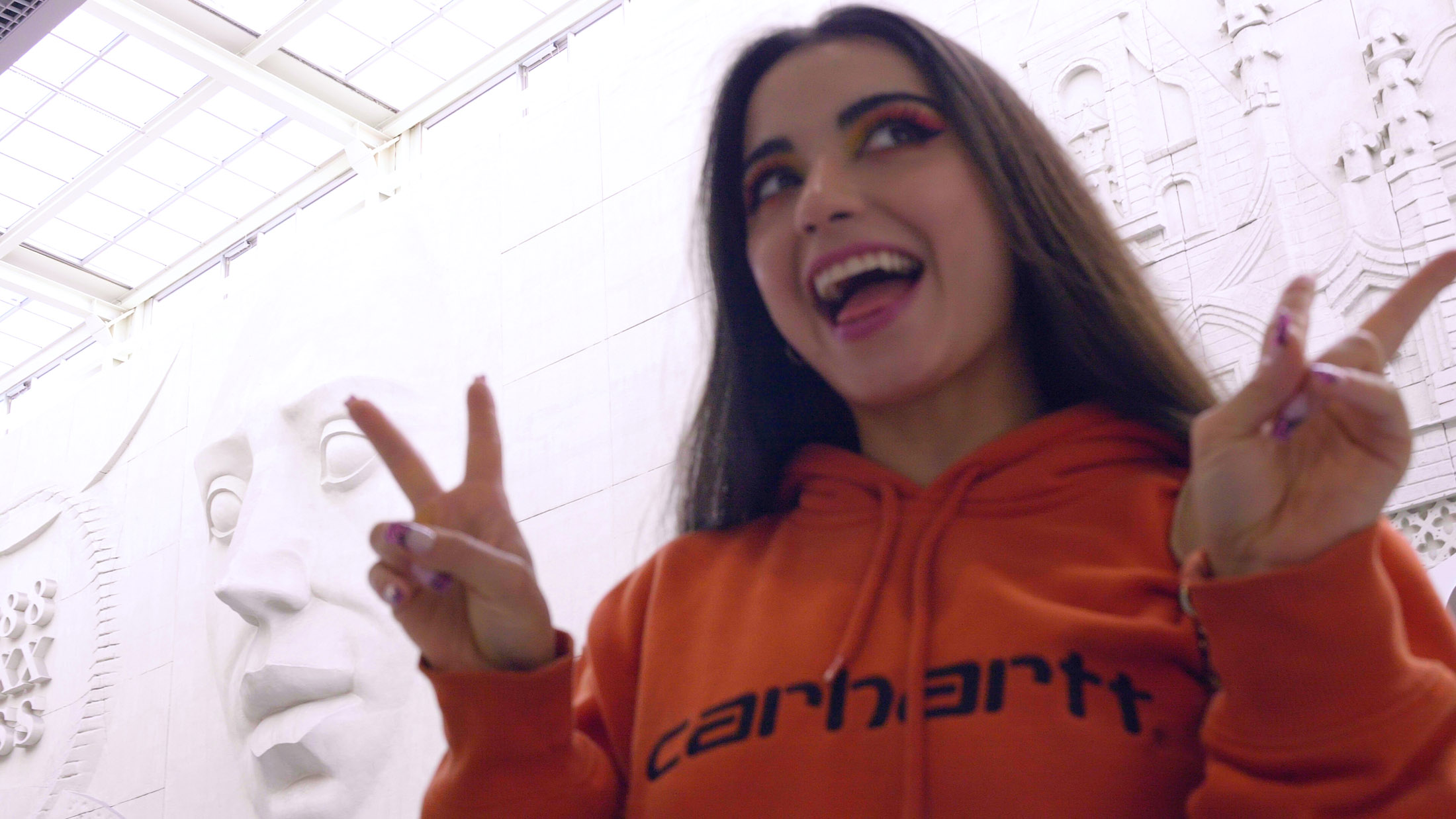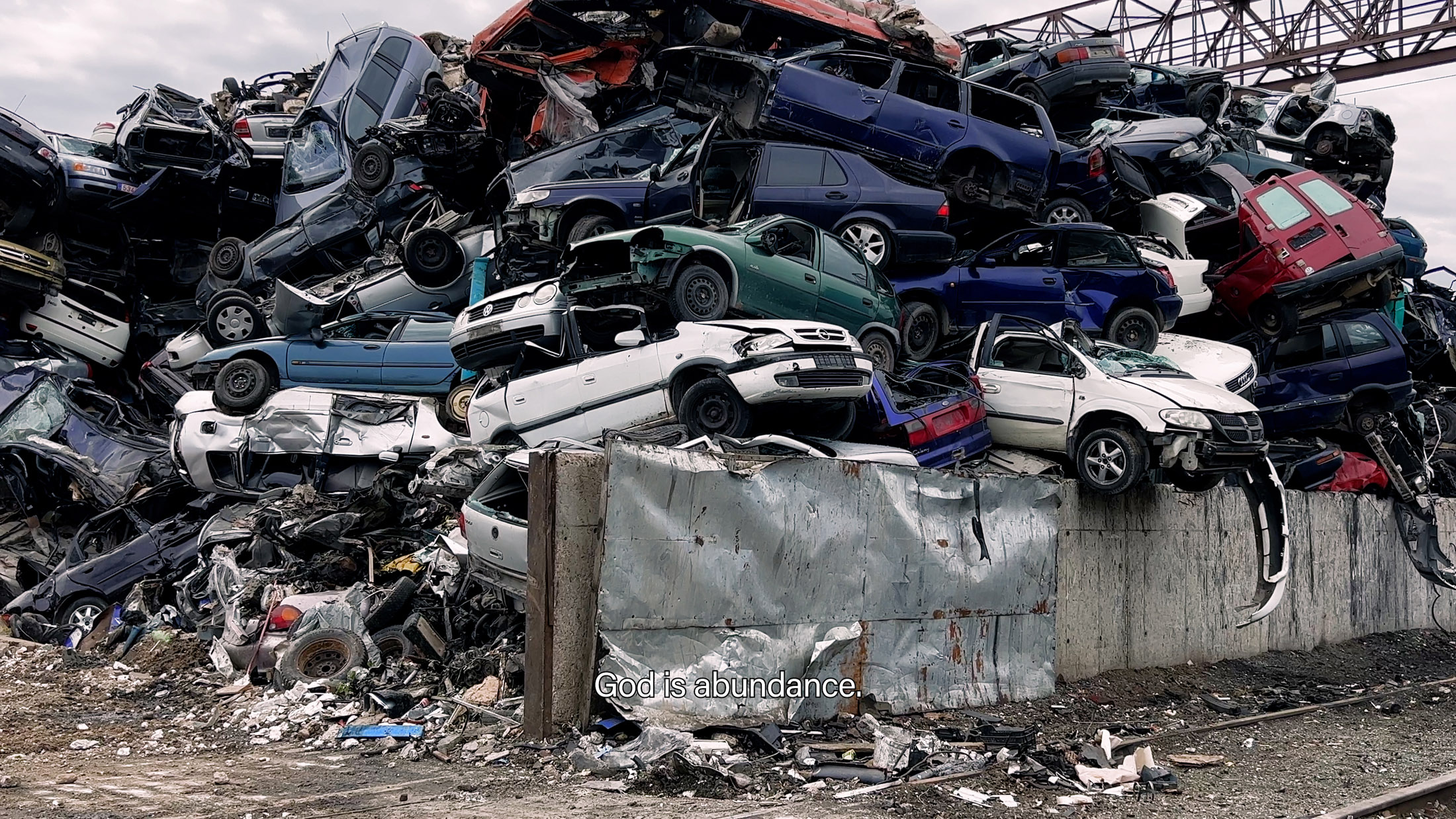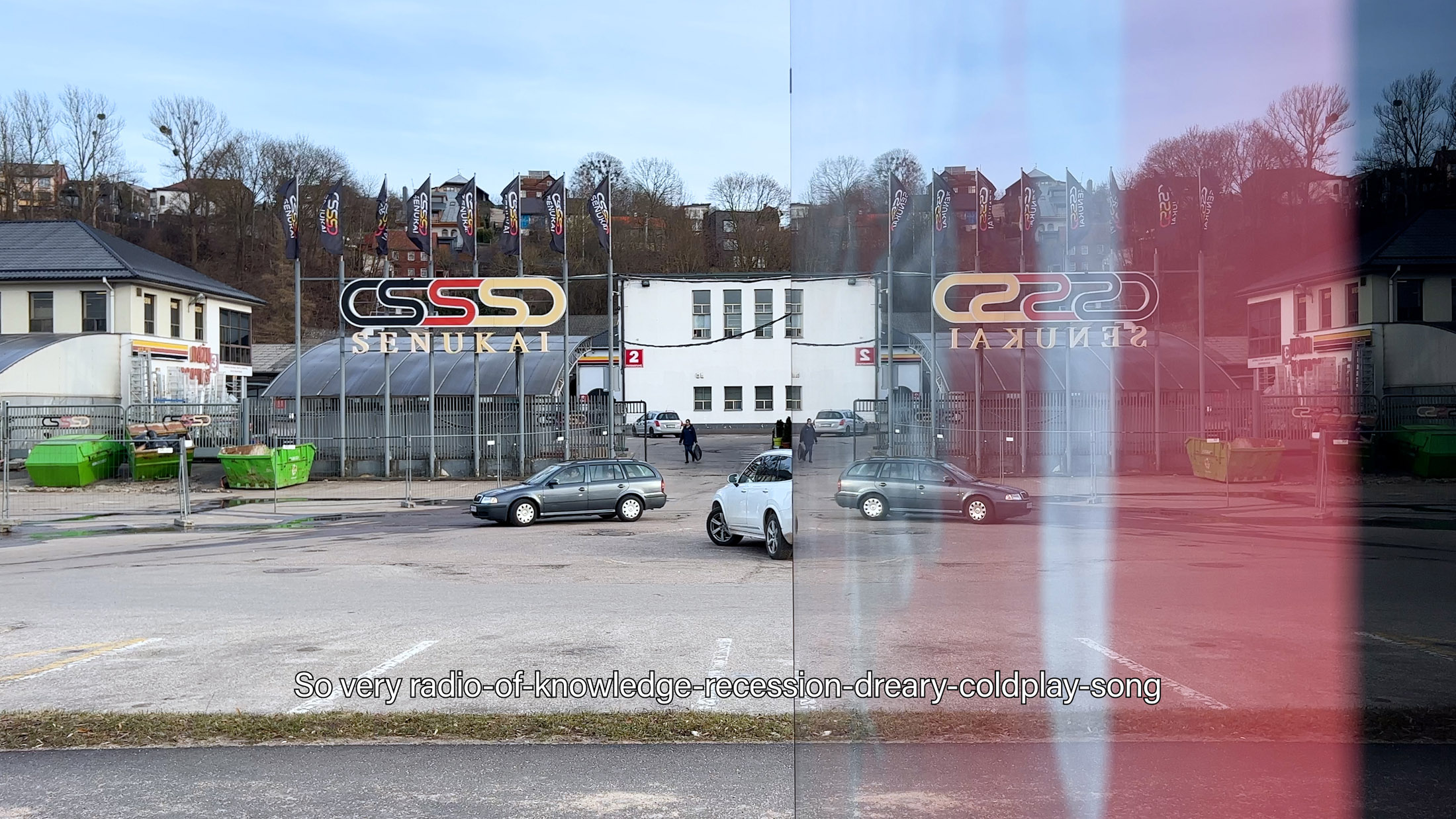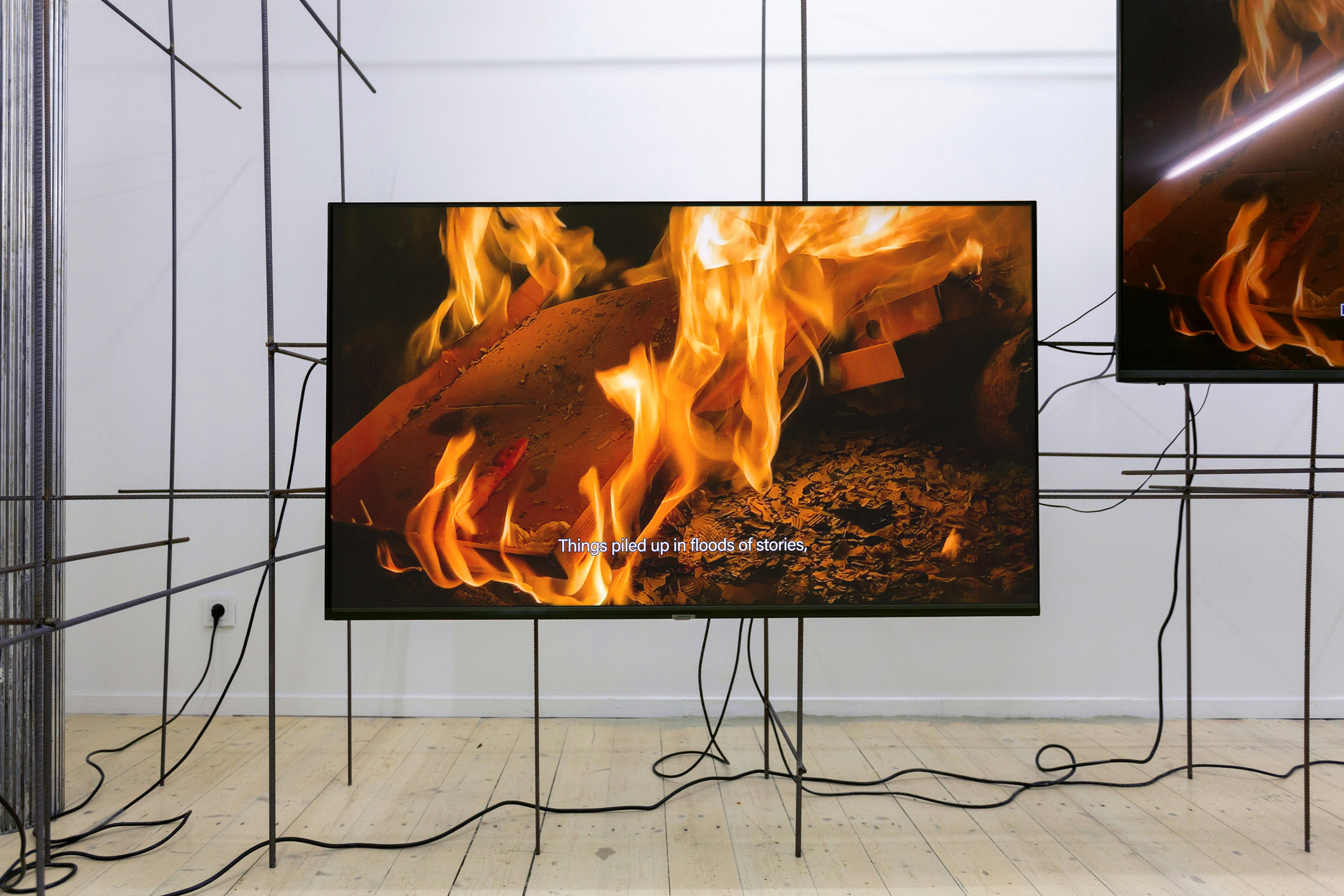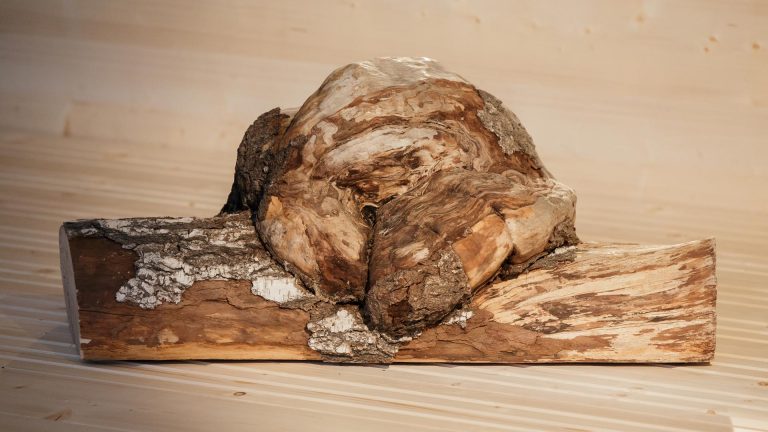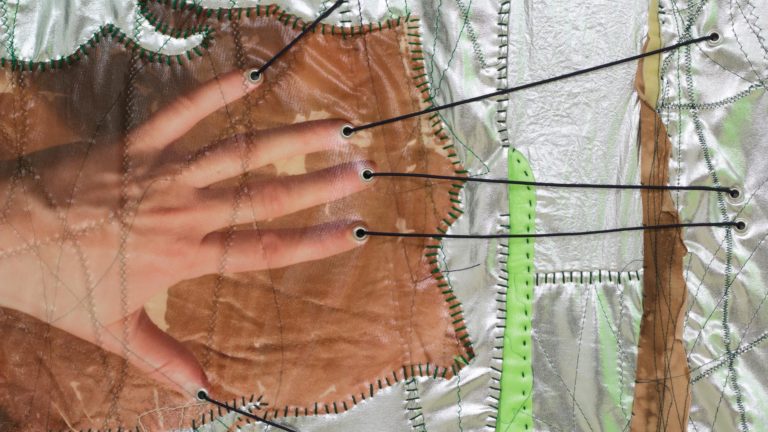Artist: Anastasia Sosunova
Exhibition title: DIY
Venue: Editorial, Vilnius, Lithuania
Date: October 19 – December 2, 2023
Photography: all images copyright and courtesy of the artist and Editorial, Vilnius
You are in a gargantuan depot. There is a tool you need. You find it easily based on the directions above the shelves. As soon as you grab it you feel it needs another object to be complete. But it doesn’t stop with the discovery of the second thing. Before you know it, you already have a whole trolley filled with useful things. Yet how useful? And for what? You need to make them make sense.
The narrator in the video is reminiscing about the early 1990s, when after the fall of socialism building supplies stores became a big thing. They allowed wider access to new tools and materials. While the whole region was undergoing a terraforming process adjusting to the market economy, the individual was offered an opportunity to take their fate into their own hands. In a culture which grew out of shortages that generated self-design, this was a decisive step into another realm. It formed pioneers in the first days of wild capitalism, like Augustinas Rakauskas, one of the richest people in the country, the owner of numerous businesses, such as the main DIY retailer Kesko Senukai, the shopping malls MEGA and the Whale (Banginis), the Harmony Park chain of SPA resorts, and the owner of Knowledge Radio (Žinių Radijas), who has also self-published three books describing his spiritual teaching. The ideas, symbols and values of this one-man self-religion are applied throughout all the businesses, in their corporate structures, aesthetics, work ethic and even merchandise placement. The deep roots in Protestant ethics, late-Soviet esoteric influences, and contemporary blends of nationalism, capitalism and Christianity connect it to the finality of salvation. Is DIY a secular ideology which, just like liberalism, becomes a metaphor for deliverance?
Anastasia Sosunova records a movement which might suggest that there are deeper, mythical patterns involved in visiting these temples. An etched image on zinc inside the installation, paraphrasing a rare Christian canon of depicting Christ tortured with all the tools laid around him, represents the tools that one is forbidden to work with on Sunday. It is another reference to the enmeshment of religion and work. The tortured flesh is in fact the object here, while all sorts of instruments are getting agency: they become parts of the story of salvation. What is the difference between that image and a photograph of a shelf with tools on a wall in a preppers’ shelter? They are the same picture.
Sosunova traces the uncanny relationship between a business operation and a religion of one. This coupling of a chain of DIY stores and a spiritual system looks unlikely only at first glance. The notes and fragments form a strong bond between these spheres, as above and below. Eve Kosofsky Sedgwick would see this as fertile ground for the paranoid reading to settle. As soon as one realises the profound nature of that relationship, one is struck by the fact that the tools sold in the depot were made in order to offer meaning in an otherwise chaotic world. The individualistic aspect of DIY is reflected in the fact that the Senukai cult never attracted any followers, the institutional religion features only one person, the founding father. Self-made and self-designed individuals indulge in their own private cults in their own private shelters. These are their spaces of salvation.
The video is the primary narrative element of the exhibition. The visitor might get the impression of overhearing fragments of a private journal from a road trip. We see the protagonists showing up in different spaces connected with the Senukai empire. They are constantly showing up in the background. Subtle tensions between the visuals and the spoken narration force us to focus on the margins of the image, not the centre occupied by the heroines. The anecdotal is set here against the epic system, which always positions itself as central and does not tolerate the outside. The journey is a ritual, which is topographically divided into two parts, and the heroines seek initiation and knowledge. Their journey is associative, and hence open to the unexpected. After all, one can avoid paranoia through reparative reading. Sedgwick advises us to ‘surrender the knowing, anxious paranoid determination that no horror, however apparently unthinkable, shall ever come to the reader as new; to a reparatively positioned reader, it can seem realistic and necessary to experience surprise.’[1] The tension between these two types of reading are staged by the tension between the video and the monumental wheels positioned in the space. They hold the perfect epitome of paranoia, two surveillance cameras. It is a reliquary, holding and protecting two eyes. These objects secure the sacred body of the religion of one and its founding narrative. A perpetual loop of representation of the self-designed. This text began with the imperative of making sense of a trolley full of tools. The reason is clear. They should be used for building a shelf that will be used to store them. They will be saved.
– Daniel Muzyczuk
Anastasia Sosunova is a visual artist based in Vilnius. Her multidisciplinary work combining video, installation, sculpture and graphics grows from personal histories and their entanglements with broader cultural, economic, and spiritual structures. She graduated from the Vilnius Academy of Arts with BA in Graphic Arts and MA in Sculpture. Solo and duo presentations of her work include Eastcontemporary gallery, Milan; Cell Project Space, London, and SixtyEight Art Institute, Copenhagen; Britta Rettberg, Munich; Screens Series programme, New Museum in New York. Her work was recently shown at BFI Film festival Experimenta programme at ICA in London, Kaunas Biennial, MACRO Museum in Rome, Malmö Konstmuseum, National Gallery of Art in Vilnius; Prospectif Cinéma programme at Centre Pompidou, Paris; FUTURA Contemporary Art Centre, Prague; Baltic Triennial 14, Vilnius and elsewhere.
[1] Eve Kosofsky Sedgwick, Touching Feeling. Affect, Pedagogy, Performativity (Durham, London: Duke University Press, 2003), p. 146.







